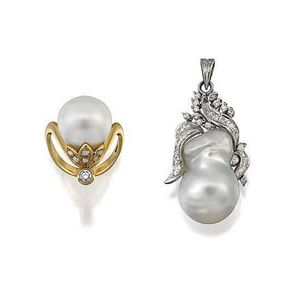Art Deco Swan Book Ends
You must be a subscriber, and be logged in to view price and dealer details.
Subscribe Now to view actual auction price for this item
When you subscribe, you have the option of setting the currency in which to display prices to $Au, $US, $NZ or Stg.
- Circa - A Latin term meaning 'about', often used in the antique trade to give an approximate date for the piece, usually considered to be five years on either side of the circa year. Thus, circa 1900 means the piece was made about 1900, probably between 1895 and 1905. The expression is sometimes abbreviated to c.1900.
- Art Deco Period - The Art Deco period was a cultural movement that emerged in the 1920s and 1930s, and was characterized by its emphasis on modernism, luxury, and elegance. The name "Art Deco" comes from the Exposition Internationale des Arts Décoratifs et Industriels Modernes, a large exhibition held in Paris in 1925 that showcased the latest trends in decorative arts.
Art Deco was a reaction against the ornate and elaborate styles of the previous era, and reflected a new modern sensibility. It was characterized by streamlined, geometric shapes, bright colours, and the use of new materials such as chrome, glass, and Bakelite. Art Deco designers sought to create a sense of luxury and sophistication, often incorporating expensive materials such as ivory, marble, and rare woods.
Art Deco had a significant impact on a wide range of artistic fields, including architecture, fashion, graphic design, and interior design. Some of the most iconic examples of Art Deco architecture include the Empire State Building in New York City, the Hoover Building in London, and the Palais de Chaillot in Paris.
The Art Deco period came to an end in the 1940s, as World War II and changing cultural trends led to a shift in artistic styles. However, Art Deco remains an important influence on design and art, and continues to be celebrated for its modernist sensibility and glamorous aesthetic.
This item has been included into following indexes:
Visually similar items

Amphora Art Nouveau basket vase. Made in Czechoslovakia c1920s. 32 cm

A Food Hook, Kanganaman Village, Middle Sepik River, Papua New Guinea, (early twentieth century), carved hardwood, 42.3 cm high. Provenance: John Pasquarelli, Papua New Guinea. Acquired from above by Dr Peter Elliott, in the 1960s

Two Kelantan canoe decorations, both of carved floral motif. The largest 116.5 x 81 cm

Pearl and diamond pendant and ring, comprising: an 18ct white gold pendant set with a cultured baroque pearl measuring approximately 14.50 x 22.00 mm surmounted by a foliate motif decorated with brilliant-cut diamonds; a 14ct ring centring a cultured pearl
